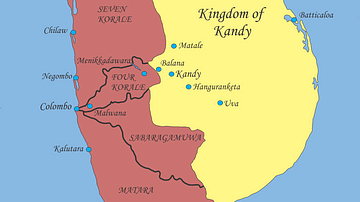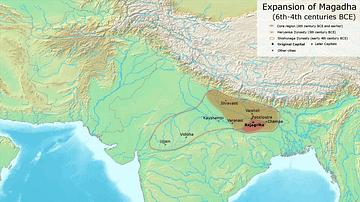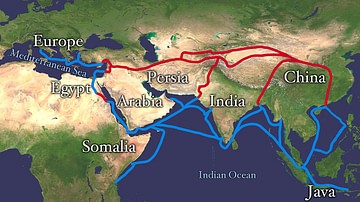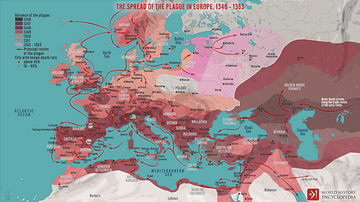Illustration
This map traces the expansion of Buddhism from its origins in the Ganges Plain of Magadha (modern Bihar, India) during the 5th–4th century BCE when Siddhartha Gautama (the Buddha) attained enlightenment. From this heartland, Buddhism spread along mainland trade routes like the Silk Road and maritime networks, often supported by royal patronage. It reached Sri Lanka by the 3rd century BCE and Central Asia soon after.
By the 1st century CE, Buddhism had arrived in China, where it adapted to local cultures, later influencing Korea and Japan, reaching these regions by the 4th and 6th centuries CE. Vajrayana Buddhism, known for its esoteric practices, emerged later, spreading to Tibet, Mongolia, and the Himalayan regions by the 8th century.
About the Author
Cite This Work
APA Style
Netchev, S. (2025, January 13). Map of the Origin and Spread of Buddhism. World History Encyclopedia. Retrieved from https://www.worldhistory.org/image/19850/map-of-the-origin-and-spread-of-buddhism/
Chicago Style
Netchev, Simeon. "Map of the Origin and Spread of Buddhism." World History Encyclopedia. Last modified January 13, 2025. https://www.worldhistory.org/image/19850/map-of-the-origin-and-spread-of-buddhism/.
MLA Style
Netchev, Simeon. "Map of the Origin and Spread of Buddhism." World History Encyclopedia. World History Encyclopedia, 13 Jan 2025, https://www.worldhistory.org/image/19850/map-of-the-origin-and-spread-of-buddhism/. Web. 10 May 2025.








